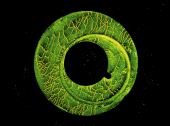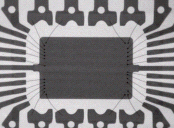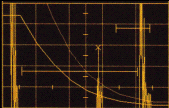Usage of Inspection iInstruments
Inspection Instruments are used for the following applications in various fields.
- Eddycyrrent Testing Instruments (ET)
-

Eddycurrent Inspection Instruments are capable of performing high-speed testing in a contactless manner by using electromagnetic field such as an eddy current and a leakage magnetic flux.
Eddycurrent Inspection Instruments can test materials that are electrically conductive, and are used for flaw detection of wires, bars, tubes and plates in the manufacturing process, and flaw detection of parts and discrimination test of different materials after the process.
Concerning maintenance test, they are used for testing nuclear power facilities, aircraft, plants and etc. Property testing equipment represented by conductivity meters, and film thickness meters, are also broadly used in industry.
Metal detectors used at airports and unexploded bomb/mine detectors used for post-war security also fall under this category. - >Magnetic Particle Testing Instruments (MT/PT)
-

Magnetic particle inspection instruments are capable of detecting flaws on the surface by using magnetism.
They can be used for quality control of a broad range of steel products including primary materials such as round bar steel and square steel pieces; automotive parts such as a clank shaft and a cam shaft; aircraft engines; and axles and couplers of railway vehicles.
Penetrant testing is a method of finding surface defects and through defects using three types of liquids: penetrant, developer and cleaning fluid, regardless of the material of the tested object.
Penetrants are divided into dye penetrant and fluorescent penetrant, and can be widely used for applications such as testing of aircraft engine parts, rocket parts, semiconductors and new materials. - Radiographic Testing Instruments
-

Radiographic testing equipment are testing equipment that use various characteristics of X-ray or γ-ray.
They include X-ray film photographic equipment using the photographic effect, analyzers using the diffraction phenomenon and fluorescent X-ray, radiographic thickness measuring equipment using the transmitting/absorbing effect, and TV fluoroscopic equipment and CT equipment combining a radiation detector and an image processor using the fluorescent effect and the ionization effect.
These equipment are used for measuring the thickness of steel in the rolling process, testing internal structures of parts or testing their defects, testing internal structures of semiconductors, testing soldered regions of printed boards, testing foreign material contained in foods, etc - Ultrasonic Testing Instruments(UT)
-

Ultrasonic testing equipment are capable of easily penetrating through to the inside and rear of the tested object by using the characteristics of ultrasonic waves, which are highly linear.
They are widely used for applications such as detecting internal defects/cracks, defective welds and defective adhesion, discriminating materials, testing properties, and measuring thicknesses and dimensions. They are also used for a broad range of applications in the field of maintenance, serving to help ensure safety.
An extensive range of ultrasonic testing equipment as well as their considerable track records are available, from individual systems, such as ultrasonic flaw detector, ultrasonic thickness meter, ultrasonic sound-velocity meter and ultrasonic hardness meter, to online systems.

